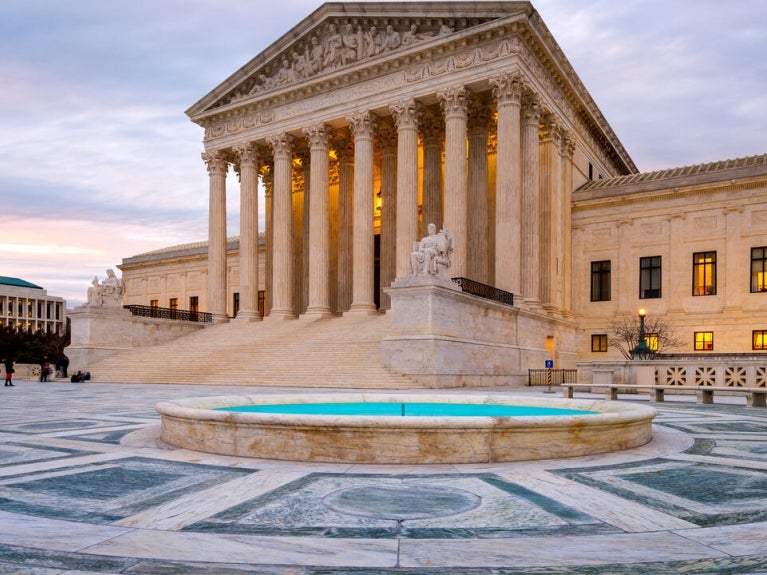Washington Supreme Court Invalidates Indirect Emitter Portions of the Clean Air Rule

In a split decision issued on January 16, 2022 the Washington State Supreme Court ruled that the Department of Ecology (Ecology) lacks authority under the state's Clean Air Act (the act) to cap greenhouse gas emissions from indirect emitters like natural gas and petroleum product distributors. Instead, the court determined that Ecology may only regulate greenhouse gas emissions from direct emitters. This decision invalidates portions of Ecology's Clean Air Rule (the rule), which required both direct and indirect emitters to reduce greenhouse gas emissions by an average of 1.7% a year. The court remanded the case back to the superior court to determine which provisions relating to indirect emitters are severable from those relating to direct emitters. On remand, the superior court will also need to decide several unaddressed procedural challenges to the rule.
This decision has important implications for the state's regulation of greenhouse gases moving forward.
Background: The State's Clean Air Act and the Clean Air Rule
The Washington legislature initially passed the state's Clean Air Act in 1967. It amended the statute in 2008 to add a new chapter titled "Limiting Greenhouse Gas Emissions." (Chapter 70.235 RCW) This chapter established a timeline for reducing greenhouse gas emission levels, with the goal of reducing overall emissions to 1990 levels by 2020 and to 50% below 1990 levels by 2050. (RCW 70.235.020(1)(a)(i)-(iii)) Since 2008, the legislature has twice declined to pass bills that would have capped greenhouse gas emissions. In 2015, Governor Jay Inslee directed Ecology to reassess its authority to regulate greenhouse gas emissions through emission standards issued under the Clean Air Act. A year later, Ecology promulgated the Clean Air Rule.
The rule created emission standards for three categories of businesses: (1) "[c]ertain stationary sources," (2) "[p]etroleum product producers and importers," and (3) "[n]atural gas distributors." (WAC 173-442-010, 020(1)(k)) The rule required covered businesses to reduce greenhouse gas emissions by 1.7% every year. In order to comply with the rule's requirements, an entity could (1) reduce on-site emissions; (2) purchase or use saved emission reduction units (ERUs); (3) sponsor an ERU-generating project within the state of Washington; or (4) purchase ERU allowances from greenhouse gas emission markets outside of Washington. For indirect emitters, the only compliance option was to purchase ERUs or sponsor an ERU-generating project.
Several trade and industry organizations promptly filed suit, arguing that the rule exceeded Ecology's authority under the act. The superior court held that Ecology lacked the authority to issue emission standards for indirect emitters. The superior court also denied Ecology's request to sever the invalid portions of the rule, instead finding it invalid in its entirety. In a 5-4 decision, the Washington State Supreme Court affirmed the superior court's analysis of Ecology's authority but reversed on the issue of severability.
The Washington Supreme Court Decision
The court held that the plain meaning of the term "emission standard" in the act cannot support Ecology's attempt to regulate indirect emitters. The court recognized that Ecology has broad authority to implement the act; however, its discretion in doing so is limited by the statutory text. Two key statutory definitions guided the court's analysis:
- An "emission standard" is "a requirement. . . that limits the quantity, rate, or concentration of emissions of air contaminants on a continuous basis." (RCW 70.94.030(12))
- An "emission" is "a release of air contaminants into the ambient air." (RCW 70.94.030(11))
The court determined that because an "emission standard" regulates the release of air contaminants, it necessarily applies only to the entities that directly release the contaminants into the air—direct emitters, not indirect emitters like natural gas distributors and petroleum product producers and importers.
Four justices dissented, arguing that neither of the definitions cited by the majority explicitly limit regulating "emissions" from only direct sources. In the dissenters' view, it is ambiguous whether "emission standards" only apply to direct emitters or to both direct and indirect emitters. The dissenters also focused on the legislature's intent that environmental laws be broadly construed to achieve the statute's goal and to provide Ecology broad authority to reduce air pollution.
Future Implications for Regulating Greenhouse Gas Emissions
The Washington State Supreme Court decision settles the question of Ecology's authority to regulate the emissions of indirect emitters, but the next look at the Clean Air Rule rests with the superior court. Adding to the uncertainty, the trade and industry groups may raise several procedural arguments left undecided by the superior court regarding Ecology's rulemaking process, including that Ecology failed to comply with the State Environmental Policy Act and that Ecology's Cost-Benefit Analysis and Least Burdensome Alternative Analysis are arbitrary and capricious under the state's Administrative Procedure Act.
Notably, in response to the decision, Governor Inslee released a statement urging the legislature to tackle the issue of greenhouse gas emissions from indirect emitters. As of this date, the legislature is considering several climate-related bills, including SB 5981, which would create a cap-and-trade program for participating entities similar to those covered under the rule. It is unclear at this time whether the court's decision invalidating the indirect emitter portion of the rule will provide additional legislative momentum to pass significant climate regulation this session.
© 2020 Perkins Coie LLP
